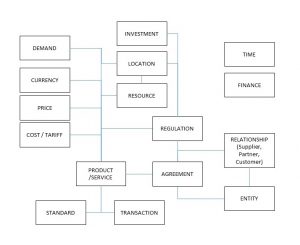By David Sprott
How do we businesses, government departments, educational establishments and individuals make plans? I suggest before you can even start planning, a model is needed to aid understanding of what’s happening, and where you are in the process. As it happens one of my colleagues just passed me a link to Jason Bloomberg’s blog on Architecting Change as a Core Competency [1]. This  includes a model for understanding change, and in the table below I have taken the liberty to extend Jason’s model.
includes a model for understanding change, and in the table below I have taken the liberty to extend Jason’s model.
|
TYPE OF CHANGE
|
Characteristics
|
|
DEFINED
|
Understood; stable present and future
|
|
LINEAR
|
Manage growth/decline
|
|
CYCLICAL
|
Product / Service / Market maturity
|
|
DISCONTINUITY
|
Unexpected event – terrorist attack, disaster, death of key personnel;
|
|
ACCELERATING
|
Inflexion points triggered by technology change; e.g disintermediation, industry platforms, Uber, Apple in Music etc
|
|
CHAOTIC
|
Seemingly simple decision causes wide impact, unpredictable effects; e.g merger, acquisition, demerger,
|
|
UNDEFINED
|
High level of uncertainty over model and outcomes
|
The model is not like a maturity model in which we are in one state at any point in time. It seems clear that many of us in the UK and Europe will be experiencing discontinuity (it’s unexpected, sudden and largely unplanned for), and chaos (the simple decision to leave the EU triggers an unimaginable number of potential consequences, for instance, there are evidently 40,000 pieces of UK and EU legislation that will be impacted) and lack of definition, (the arrangements will only emerge over time, perhaps over many years). The chaotic element is further amplified by the absence of anyone in charge and the number of parties (28 EU countries) to the current and any future agreement.
Read the entire article at http://davidsprottsblog.blogspot.com/2016/06/brexit-planning-and-modernization.html



